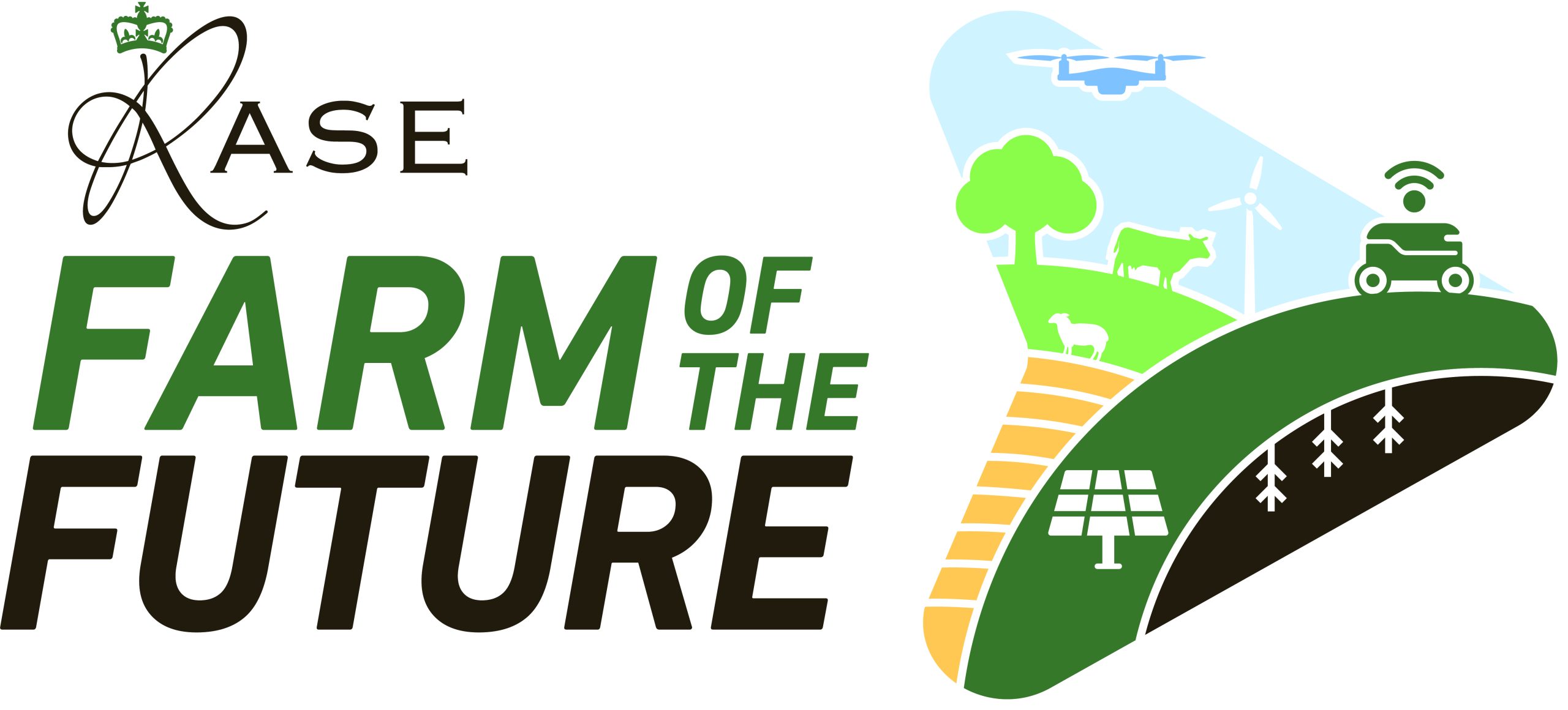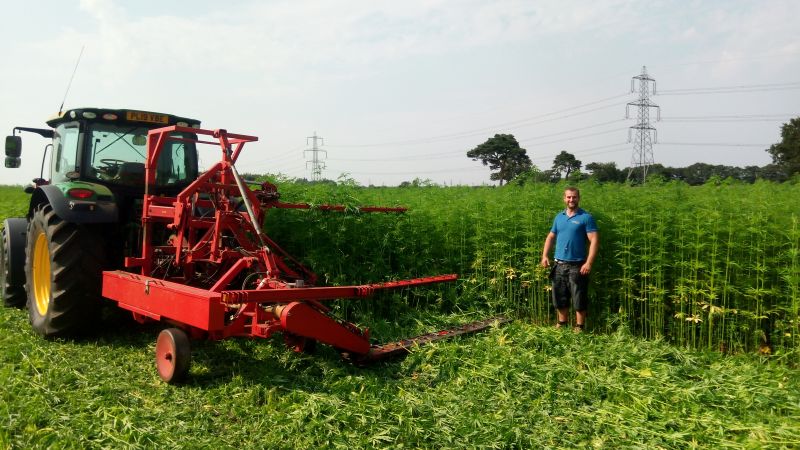Once dismissed and regulated out of existence, hemp is quietly staging a comeback—this time as a soil health regenerator, carbon sink, and sustainable break crop. But can it overcome regulatory hurdles and market gaps to take root in mainstream UK rotations?
To explore the potential of hemp as a break crop, we spoke to Luke Middleton from The Carbon Farm. He shared insights into the history of hemp cultivation in the UK, the agronomic requirements of the crop, and the opportunities for farmers to access end markets.
History of hemp in the UK
Hemp was grown historically in the UK from the Middle Ages, primarily for its fibres, with several place names reflecting this legacy. In the early 20th century, hemp was poised to become a key raw material for the paper and clothing industries. However, in 1928, legislation was introduced that prohibited its cultivation. Apart from a brief period during and after World War II – when “Hemp for Victory” was introduced to provide much needed cordage, rope and bandages – hemp remained illegal in the UK until 1993.
Since then, several companies have attempted to grow hemp, but ceased operations due to the difficulty in securing a reliable market. Currently, only a few farms grow hemp at scale, including two farming businesses in Yorkshire, which utilise hemp in various markets. These businesses have processing equipment to take hemp straw and produce valuable hemp fibre, hemp shiv (woody core) and dust residue.
Compared to most countries, where hemp cultivation is more established, the UK lags significantly. France, for example, grows approximately 25, 000 hectares of hemp annually, compared with 900 hectares in the UK.
Possible outlets for hemp
Hemp has potential applications in various industries, including construction, paper, automotives, and textiles.
Construction is currently the easiest route to market, as hemp can be used in an unrefined state, currently as insulation, plasterboard and hemp lime render. The textile industry is challenging because specialist equipment is required to keep the fibres long and parallel, to then be processed offshore.
Luke highlights the “chicken and egg” dilemma facing UK-grown hemp, with large-scale buyers requiring a consistent supply, yet farmers needing established markets before increasing production.
Growing hemp
Luke shares that hemp is the fastest growing annual crop available. In the UK, it is typically drilled in mid-April, reaching heights of three to four metres before being harvested in August. The benefits hemp brings to the soil in such a short window of time make it a notable choice in a rotation.
Soil health benefits
The crop has a one-to-one root-to-shoot ratio (height of the plant equals depth of the roots). This deep root system improves soil aggregation, water infiltration and water retention, while also bringing nutrients up from deeper soil horizons. With around 200-300 plants per m², the root systems create a “webbing” effect in the soil, which protect the plants during periods of drought, and can also bring a 15-25% increase in yield after the hemp crop, due to the increased accessibility of nutrients.
The deep and extensive root systems also contribute to hemp’s ability to draw carbon out of the atmosphere and sequester it into the land.
Low input requirements
Hemp does not require any pesticides or herbicides. It is vulnerable to compaction issues in its outset, but once established, can withstand drought and waterlogging. Hemp naturally canopies over competing weeds starving them of sunlight. Hemp can grow with almost no water inputs due to its roots, and has no special nutrition requirements.
Hemp as a break crop
Alternative crops are gaining traction in the arable sector, as oilseed rape faces increasing challenges from pests such as cabbage stem flea beetle, the price of wheat is at almost break even and wireworm is impacting potato growers.
In addition to the soil benefits, hemp offers effective grass weed control, particularly against blackgrass, brome grasses, and Shepherd’s purse, making it a valuable addition to rotations in affected areas.
Harvesting hemp
Due to its incredibly strong natural fibre, hemp cannot be combined and requires specialist equipment for harvesting. It is now possible to buy a specialist hemp harvester, which is essentially a multi-tiered reciprocating blade that cuts hemp to roughly 0.5m lengths.
After cutting hemp, the crop must lay in the field for between three and six weeks, in a process called retting, which is required by law and stated in the specialist license. This allows the leaves to break down into the soil, which can provide a nitrogen boost for the next crop. Retting also provides time for the pectin in the hemp to break down, which means it can be baled conventionally.
Typically, a yield of approximately two tonnes per acre can be expected from growing hemp on long term forecasts, but yields exceeding four tonnes per acre are common. Hemp straw sells for between £220-320 per tonne in today’s market.
Licensing
It is necessary to obtain an industrial hemp license from the Home Office to grow hemp. This is classified as a controlled drugs domestic license and lasts for three years, with plans to extend this to 6 years. The licensing process is very thorough, requiring farmers to provide extensive personal information and have a clean criminal record. There are co operatives across the UK, The Carbon Farm being one, who oversee this issue.
The Carbon Farm
The Carbon Farm aims to scale up UK hemp production to support industries in reducing their carbon footprint, while also advocating a transition to regenerative agriculture on UK farms. The Carbon Farm introduces nature friendly farming techniques and processes, while helping farmer access knowledge about which government provided incentive payments they can apply for. Their aim is to create a service for farms, to move towards a more biodiverse system which capitalises on the agricultural necessity to restore nature through growing industrial hemp.
The business grew its first crop in 2020, yielding two tonnes per acre on a five-acre plot. In its second year of research and development, this was extended to eight acres on the same farm and achieved a similar yield while trialling no-till cover cropping and fully organic nutrition. This year they are cultivating across multiple farms in Yorkshire and are working towards finalising a standardised process to farm hemp in the UK.
Working with the Biorenewables Development Centre at the University of York, The Carbon Farm are collecting soil and carbon data to record the impact of growing hemp to our farmlands and also the climate. This data can also be used by the farms to support applications for payments.
Luke notes that while end markets for UK industrial hemp are growing, large-scale industry uptake remains limited, and The Carbon Farm is aiming to bridge that gap.
Growing hemp in the UK
Hemp cultivation is expanding, albeit slowly. In 2016, only 11 licences were issued; by 2024, this had increased to around 350 licences covering just under 1,000 hectares.
Growing hemp can deliver may benefits. It can be grown as a break crop between cereals, helping to control grass weeds and improve soil structure, while requiring low inputs and sequestering up to 20 tonnes of carbon per hectare.
Hemp currently has diverse applications in the construction, automotive, and textiles industries. For farmers interested in trialling industrial hemp, securing a market, obtaining the correct harvesting machinery, and acquiring a licence are essential first steps. Find out more about how The Carbon Farm can support with this here.

